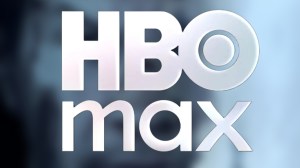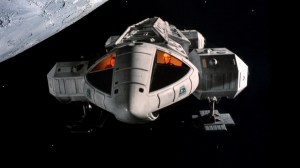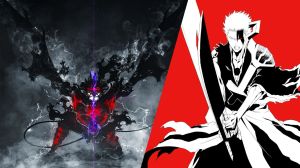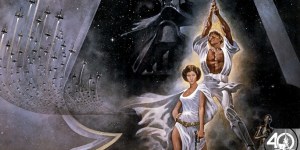
By now, most gamers realize just how big a presence Nintendo has in the video game industry. The company has been around for decades now, riding high on the success of its own hardware (particularly the Nintendo Switch), as well as franchises like Super Smash Bros., Metroid, The Legend of Zelda, Pokemon and, of course, Mario.
Videos by ComicBook.com
But things weren’t always that way. Despite the company’s recent history in video games, it’s actually been around for a lot longer, and got its start in a much smaller industry – 128 years ago. No, we’re not kidding. Let’s take a look now at the history of the company that built Mario and other legends, becoming a major force in the industry as a result.
Dealing The Cards

Nintendo actually got its start wayyyyy back in 1889, when Fusajiro Yamauchi founded the company to create hanafuna playing cards. The company rode high on this success for years, and then tried to venture out into other areas in 1963, including cabs and…love hotels. (Yeah, how great would it have been to go to a Nintendo-branded love hotel?!).
But it was when the 1970’s came around that the company decided to try its hand at video games, opening up a new venture that would deviate from its card business. And it’s here that it would begin to cement its legacy in the gaming world.
Do The Donkey Kong

In the late 70’s, the company gave handheld gaming a try with its line-up of game & Watch games, created by the late Gunpei Yokoi (who would also work on the company’s highly successful Game Boy handheld in 1989). The line-up did well, but it was when the company tried its hand at arcade gaming that things began to get interesting.
Following its release of its first coin-op, EVR Race, in 1975, the company would try the more contemporary Donkey Kong in 1981. The game became an immense success for years to come, and introduced the world to two major gaming forces – the plumber Mario, who would attempt to rescue his beloved Pauline from the clutches of the evil ape; and designer Shigeru Miyamoto, who would be a force in the company – and the industry – for years to come.
Taking The Home Market By Storm

Following its line-up of Game & Watch toys – which would gain novelty with the Nintendo elite – Nintendo decided to give the home gaming market a try with the release of the Famicom (Family Computer) console in 1983. It ported a number of its popular arcade games to the system at the time – including Donkey Kong – but it would take a while for Nintendo to consider the U.S. market, especially with the video game crash of 1983.
But in 1985, the company moved forward with its launch of the Nintendo Entertainment System, bundling it with select titles like Gyromite and Super Mario Bros./Duck Hunt. As you might guess, the Mario bundle did way better, and became a major selling point for Nintendo – and brought back the home gaming market as well. Other competitors jumped into the fray, including Atari and Sega, but none could keep up with Nintendo.
Moving Into Portable And 16-Bit Territory

Nintendo found some major competition over the years, with the Sega Genesis gaining speed as the first “true” 16-bit console, as well as other systems like the Turbo-Grafx 16 and the Game Gear. But it would maintain its lead with the release of key technology.
In 1989, it released the Game Boy, a handheld system that scored major points with audiences, thanks to games like Tetris and Super Mario Land. It also gained attention in the 16-bit realm in 1991 with the release of the Super Nintendo Entertainment System, a console that thrived with games like Super Mario World and F-Zero, amongst other hit releases.
But by the mid-90’s, things would change dramatically, thanks to a key decision by thee company that created one of its biggest competitors…
Its Own Worst Enemy

In 1993, Nintendo put together a CD-ROM add-on for its Super NES that would bring its technology into the CD realm, under the code name “Play Station”. Sony partnered up with them on the project, before Philips stepped in later. However, Nintendo opted to cancel the project, instead working more on a cartridge-based system, known as the Nintendo 64.
While the N64 did very well on the market, Nintendo didn’t realize just what kind of competitor it was creating. In 1995, Sony created the PlayStation system from the remnants of the cancelled project, and soon became a major competitor to Nintendo – and it’s still dominating the industry today, thanks to the PlayStation 4.
That said, Nintendo kept its stance in the industry, thanks to memorable N64 games like Super Mario 64 and Star Fox 64, amongst many others.
Its First Real Failure

While Gunpei Yokoi gained fame for his Game & Watch and Game Boy inventions, he also gave Nintendo its first failure in 1995 with the Virtual Boy system. Meant to provide 3D gaming experiences in an on-the-go format, the system was at first hailed for the use of its technology, as well as innovative games like Mario Tennis and Teleroboxer.
But the fame was short-lived. People became nauseous with the red-and-black 3D display, and the system had limited third-party support. As a result, Nintendo closed up shop on it, and Yokoi retired shortly thereafter.
It served as a lesson that not everything Nintendo produced was gold – and even with the greatest franchise stars, the system needed more to go on.
Getting Through The Motions and Double Screens

Nintendo would continue success over the years with its Game Boy reiterations – including the Color and the Advance – as well as the GameCube, its first CD-based console, which was a hit for several years, despite having to keep up with the PlayStation 2 and Xbox.
However, things would change dramatically for the company in 2006 with the introduction of the Wii. This motion-based system was a big hit with fans, thanks to games that utilized the tech brilliantly, like Wii Sports (the pack-in) and Super Mario Galaxy.
The system would become one of Nintendo’s most popular in the company’s history, even though it eventually folded up shop to make room for the Wii.
Meanwhile, in handheld land, Nintendo introduced the Nintendo DS in 2004, introducing a dual-screen handheld that would be the business model for handhelds for years to come, including the Nintendo 3DS and the 2DS. The system would sell millions of units, again continuing the company’s dominance in the handheld front. (The Pokemon games that came out for it didn’t hurt either.)
Enter The Wii U and 3DS

Nintendo tried to adapt to the times in the 2010 era with the release of the Wii U in 2012, a console that would make use of HDMI technology, as well as better connectivity. However, the system’s odd design and lack of third-party support left a lot of gamers feeling burnt out, despite stellar first-party games like Bayonetta 2 and Mario Kart 8. The system only sold 12 million units in its lifetime, a mere fraction of the Wii’s sales.
The company also launched its 3DS handheld system in 2011, producing a neat little effect for games like Super Mario 3D Land and Super Smash Bros., amongst others. The system was a hit for several years, but Nintendo eventually did away with 3D with later models, even though its New Nintendo 3DS works with the format. The Nintendo 2DS XL was just introduced, and it appears to be the business model moving forward. In fact, some future games don’t even support 3D display.
And Here We Are With Switch
After learning its lessons with the Wii U, Nintendo opted to go with a different approach to the Nintendo Switch, reaching out to millennials as well as family gamers. As you can see from the above commercial, it’s a shake-up from its usual path, just catering to kids, and it paid off big time.
Throw in a Super Bowl commercial and the announcement of several games (including The Legend of Zelda: Breath of the Wild), and the system took off like a rocket. It’s sold several million units in its first few months of release, and has a killer line-up of games for the forthcoming year, including Super Mario Odyssey, Fire Emblem Warriors and a new Kirby game.
The company’s handheld line-up continues to thrive, too, with games like Metroid: Samus Returns and Fire Emblem Warriors promising to be big sellers for the holiday season. And, again, more Pokemon games are coming too, including enhanced versions of Sun and Moon.
Remembering Satoru Iwata

Nintendo has had a lot of people attached to its success over the years, including Fusajiro Yamauchi, Hiroshi Yamauchi (who would serve as president of Nintendo during its 8-bit and 16-bit heights), Shigeru Miyamoto and Reggie Fils-Aime. However, one name that truly resonates with gamers is Satoru Iwata.
Iwata-san was with the company since its humble beginnings in the video game industry, starting in 1980 alongside the team at HAL Laboratory, which worked on Earthbound and the Kirby franchise. He also helped with development of the popular Super Smash Bros. series, which got its start on Nintendo 64 before moving on to other consoles.
Iwata would become the company’s president in 2002, when Yamauchi opted to retire. He would lead it to many successes over the years, including the Wii, the Nintendo DS, and many popular game releases, and also set the framework in place for the Nintendo Switch.
Sadly, he would never see it through to completion. Iwata passed away on July 11th, 2015 of a tumor in his bile duct at the age of 55. His passing saddened the industry, but pushed Nintendo to strive to get its stance back in the world of video games – something it’s easily done with the help of the Nintendo Switch.
There’s talk of a special tribute included with the Nintendo Switch where you can unlock one of Iwata’s most iconic titles, Golf from the NES era, by performing a hand gesturing of his on his birthday. We haven’t tried it yet, but we’re eager to give it a try. Farewell, Iwata-san. You are missed.
So What’s Next?
Now lies the big question – where can Nintendo go from here? Well, the Switch is firing on all cylinders, and is promising to be a big seller this holiday season; the SNES looks to live again, thanks to the forthcoming release of the SNES Classic Edition, which arrives this Friday with 20 titles, as well as the unreleased Star Fox 2; and many games look to be big hits, including Odyssey and Pokken Tournament DX.
The company has good third-party support again, and it’s likely to continue growing with the success of the Switch, especially after this holiday season.2018 also looks to be huge with games like Kirby, Yoshi, and Pokemon rarin’ to go., along with the announced return of Metroid Prime.
So it looks like Nintendo is ready to be back to its old self again, learning its mistakes from the Wii U and hoping that it can be a favorite again. It all depends on its stock this holiday season, but all signs are pointing to the big “N” being something great…just like how it started 128 years ago.








